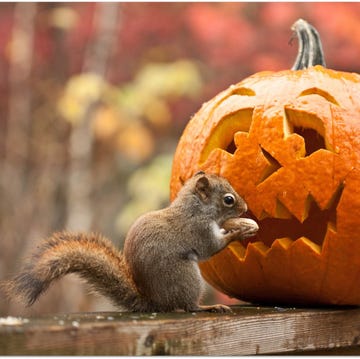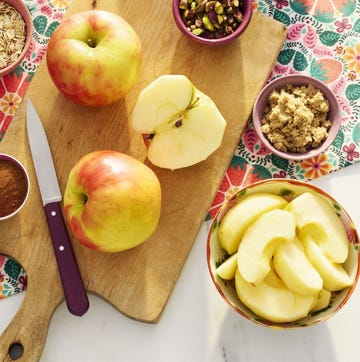Ready to learn some basic cooking techniques? Home cooks should know a few practical skills in the kitchen. For instance, do you know how to soften butter? What about chopping an onion... the right way? Plus, everyone should know about blanching vegetables—especially if you plan to prepare some freezer-friendly meals. But what exactly is blanching and how do you do it? Ahead, you'll learn the simple steps for how to blanch, including the tools you'll need, and which vegetables are best for blanching.
The steps for blanching are so simple that once you get the hang of it, you'll feel like a pro in the kitchen! By blanching and shocking (more on that later), you'll be well prepared for freezing vegetables or making a colorful crudité platter to serve with your favorite party dip. Plus, if you're planning to make Ree Drummond's Nicoise salad, you'll want to know the steps for blanching green beans ahead of time. So, what are you waiting for? Let the cooking lesson begin.
What Is Blanching?
Blanching simply means to quickly boil foods (typically vegetables, fruits, or nuts) without fully cooking them. The blanched foods are then placed in a bowl of ice water for shocking (another cooking term). By shocking the vegetables or fruits after a very-quick boil, you stop the cooking process in its tracks.
Why Blanch Fruit and Vegetables?
The end result? Brightly colored vegetables that still hold their texture. Many people use blanching as a technique to prepare veggies for fresh salads. For instance, Ree adds blanched asparagus to her New York-style chopped salad and blanch beans in her classic three bean salad.
Another reason to blanch is that it loosens skins for peeling, and it shortens cook time for easy meal prep. Partially cooking veggies will make it easier to whip up a quick stir fry during the week. Not to mention, blanching is one of the best methods for preparing foods for freezing. Let's say you want to freeze vegetables—like broccoli, corn, or squash—you'll need to blanch them briefly in boiling water, then dunk them in an ice bath to better preserve their color and texture.
How Do You Blanch Vegetables?
Blanching only takes a couple of minutes, but you'll need to set up a few tools before you get started. Along with a pot of boiling water, you'll want to have a strainer handy and a bowl of ice water ready for shocking. Here are five simple steps for how to do it:
- Prepare your vegetables by trimming or cutting when necessary.
- Bring a large pot of salted water to a boil.
- Prepare an ice bath by filling a bowl with both cold water and ice. Add your vegetables to the boiling water and cook until just barely softened and the color becomes bright and vibrant. (Note: Blanching times will depend on the type of vegetable, but it's best to cook one vegetable at a time so that they each cook evenly.)
- Once blanched, immediately use a strainer to transfer the vegetables to an ice bath. Then, drain the vegetables and they'll be ready to use!
Which Vegetables Are Best for Blanching?
There's a slew of veggies that will benefit from a quick blanch. Try the cooking method with green beans, broccoli, asparagus, carrots, snap peas, small potatoes, corn, or okra. Here's how to long it takes to blanch each variety:
How Long to Blanch Vegetables
- Asparagus: 2 to 4 minutes
- Broccoli: 2 to 3 minutes
- Carrots: 2 to 3 minutes
- Corn on the cob: 4 minutes
- Green beans: 2 to 3 minutes
- Okra: 3 to 4 minutes
- Small potatoes: 4 to 6 minutes
- Snap peas: 2 to 3 minutes














